Department of Industrial Engineering
4207 Bell Engineering Center
1 University of Arkansas
Fayetteville, AR 72701
Phone: (479) 575-3156
Fax: (479) 575-8431
Capstone 2021-2022
6th Annual Industrial Engineering Capstone Symposium
Arkansas Union Verizon Ballroom, University of Arkansas, Fayetteville
Wednesday, May 4, 2022
Symposium Exhibition and Breakout Presentations 10:45 AM – 11:45 AM
Industry Partner and Faculty Recognition Luncheon 12:00 PM – 1:00 PM
Symposium Exhibition and Breakout Presentations 1:15 PM – 4:15 PM
Student Awards Reception 4:30 PM – 5:00 PM
News Recap of Capstone Symposium 2022
Balancing Workload by Optimizing the Assignment of Field Sales Proposals to Pricing Engineers
Presentation Time/Location: 2:15 PM / Room 512
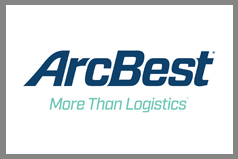
Student Project Manager: Luke Welch
Other Student Team Members: Aidan Massanelli, Andres Luna Orosco Amelunge, Hector Aguilar, and Harrison West
Industry Partner: ArcBest
Industry Partner Contacts: Erin Hills, Logistics Engineer; Drew Caple, Manger, Pricing and Supply Chain Analytics; and Alex Hoge, Senior Manager, Carrier Partnerships
ArcBest is a multibillion-dollar freight and logistics solutions provider located in Fort Smith, Arkansas. With over 40,000 capacity providers across North America, ArcBest solves complex supply chain problems for customers utilizing truckload, less-than-truckload, freight brokerage, and several other avenues of services. When a customer identifies a service that ArcBest can provide, a Field Sales Proposal is created and assigned to a pricing engineer. Once assigned, the Field Sales Proposal is labeled a Pricing Proposal Maintenance, or PPM. ArcBest has expressed concerns that pricing engineers sometimes experience a workload imbalance due to the PPM assignment process. The goal of our project is to improve the process of assigning Field Sales Proposals to pricing engineers. By utilizing PPM data provided by ArcBest, our team performed a regression test on different types of PPMs to provide an estimated mean service time for each type. Then, we developed a Java application that assigns batches of PPMs to engineers in a way that minimizes the difference of workload between engineers. This optimization approach is expected to reduce the workload imbalance and result in a more even utilization of engineers and faster service times for PPMs.
Reducing Patient Transportation Times through Improved Staff Scheduling using Simulation
Presentation Time/Location: 10:45 AM / Room 513
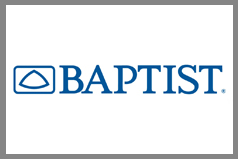
Student Project Manager: Olivia Gammill
Other Student Team Members: Taylor Knabe, Jennifer Sanchez, Andrew Hume, and Patrick Gonzalez
Industry Partner: Baptist Memorial Hospital-Memphis
Industry Partner Contacts: Katie Parker, Regional Director for Performance Improvement; and Jared Moses, Administrative Director at Baptist Memphis
Baptist Memorial Healthcare Corporation is a network of hospitals located throughout the central-south of the United States that offers patient treatment and medical care with various specialties. Our interest is in patient transportation at Baptist’s flagship hospital in Memphis, Tennessee. Transportation refers to team members, called transporters, who pick up and move patients between different areas of the hospital. Baptist is concerned with excessive patient transportation times. We identified that the Memphis hospital is falling short of Baptist’s 35-minute transportation goal. On average, transportation time takes 51.6 minutes on weekdays and 44.6 minutes on weekends. We determined that 82% of the total transportation time is spent waiting for the transporter to be ready. These long waiting times suggest a staffing issue. To explore this issue, we built a detailed discrete-event simulation model of the transportation process. We used this model to experiment with different staffing strategies. By more effectively utilizing the staff Baptist already has, we were able to decrease the average transportation time to 40 minutes where 55% of transports were meeting the goal of 35 minutes or less. By increasing the number of staff to 40, we found that the average transportation time decreased to 31 minutes and the percentage of transports completed in 35 minutes or less increased to 74%.
Improving the Scheduling of Protection Services Staff by Creating a Microsoft Excel Application and Exploring Shiftboard’s Full Functionality
Presentation Time/Location: 1:15 PM / Room 514

Student Project Manager: Natalia Sandhu
Other Student Team Members: Camila Schrader, Itza Della-Sera, Sarah Bollinger, and Esteban Siles
Industry Partner: Crystal Bridges Museum of American Art
Industry Partner Contacts: Kash Logan, Director of Protection Services; Brent Pettingill, Protection Services Manager; and Michelle Mittiga, Administrative Assistant
Crystal Bridges Museum of American Art is a non-profit charitable organization that celebrates the American spirit in a place that unites the power of art with the beauty of nature. Our interest in Crystal Bridges is their Protection Services department, specifically the scheduling of Protection Services staff. This department provides a safe environment for employees and guests while also protecting the museum’s art. Currently, Crystal Bridges has concerns due to the inefficiency of creating schedules and the inefficient use of Shiftboard. Shiftboard is the software the Protection Services department uses to distribute the completed schedules to the employees. The administrative assistant responsible for creating the schedules takes approximately 3 hours per week to create the schedules, with 33% of time spent manually transferring the completed schedules into Shiftboard. To reduce this time, our team created two Microsoft Excel tools that eliminate Shiftboard usage. For the first tool, every employee is allowed access to one worksheet, accessed only with a username and password, that has the corresponding employee’s schedule for the upcoming two weeks. With the second tool, the administrative assistant clicks a button to automatically send the employee’s schedules to their individual email. Additionally, we found ways to improve the current use of Shiftboard. We mastered details of Shiftboard’s functionality, converted that functionality to Crystal Bridges, provided documentation of Shiftboard’s relevant tools, and taught the administrative assistant how to properly use the features. We use simulation to compare the use of the new Excel tools to the current process, and we use optimization to offer general guidance on fair scheduling practices.
Decision Making for Downstream Pace in the Event of Upstream Delays
Presentation Time/Location: 2:15 PM / Room 514
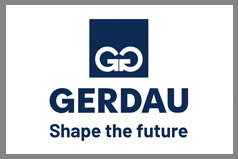
Student Project Manager: Neil Balasekaran
Other Student Team Members: Peyton Dunman, Noah Layton, Bailee Miller, and Maddie Pearl
Industry Partner: Gerdau
Industry Partner Contacts: Nicholas Boerjan, Melt Shop Department Manager; Clinton Johnson, Organizational Development Specialist; and Heather Christensen, Process Engineer
Gerdau is a steel manufacturing company located in Fort Smith, Arkansas, that specializes in the production of steel billets. Our interest is in the pace at which the six-step steel making process of the melt shop is operating. When a delay occurs at an upstream process, the downstream caster pace is negatively impacted. Through stakeholder interviews, our team concluded improper pacing of the melt shop, due to these unpredictable delays, leads to a reduction in the caster’s Tons Per Hour (TPH), a throughput key performance indicator for the melt shop. Our goal was to create a tool that aids in decision making for setting caster pace (TPH) upon different melt shop delays and improves data collection for future delay analysis. To accomplish this goal, we designed a tool that allows for visibility of station progress. This system requires a data collection component that allows each station to record their progress, a data analysis element for the floor manager to better predict an operating TPH, a monitoring system for the floor manager to see the progress within each station, and a user interface that is easy for all operators to use.
Developing a Consolidated Toxicological Database to Perform Chemical Risk Analysis and Predictions
Presentation Time/Location: 3:15 PM / Room 514

Student Project Manager: Quinn Salverson
Other Student Team Members: Andrew Banks, Colin Connelly, Kaitlyn Frey, and Isha Rajaram
Industry Partner: The Instituto Superiore Di Sanitá - Department of Environment and Health
Industry Partner Contacts: Dr. Olga Tcheremenskaia - Principal Investigator; Dr. Chiara Battistelli - Principal Investigator; Dr. Cecilia Bossa - Principal Investigator; and Cristina Parenti - Sinergi llc, Professional Affiliate
The Instituto Superiore di Sanità (ISS) acts as the main center for research and advice on public health in Italy. The Department of Environment and Health of ISS aims to reduce environmental and social risk factors through risk assessments that include the development of predictive toxicology models for speeding up the toxicological assessment of chemicals and, at the same time, for reduction of animal testing. The predictive toxicology approaches share the need of highly structured and standardized data as a starting point. ISS currently utilizes five separate data sources for carcinogenicity and mutagenicity called the ISSTOX to combat animal testing, with each dataset defining different chemical attributes and testing information for analysis. A 2020-2021 industrial engineering capstone team at the University of Arkansas initially sought to improve the interoperability of the ISSTOX data by designing a relational database model and proposing a user-interface that allows for chemical visualization and analysis tools. The primary goals of our project are to design and implement a simplified version of the relational database model in Microsoft Access and to design and implement a system allowing for data integration, visualization, and analysis. The finalized Microsoft Access relational database will allow public use of toxicological data to perform chemical risk and predictive analysis.
Maximizing Utilization of Intermodal Local Tractors through Driver Reassignment
Presentation Time/Location: 10:45 AM / Room 512
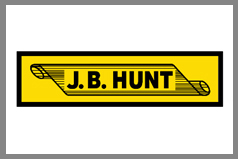
Student Project Manager: Coleman Warren
Other Student Team Members: Faris Balbaid, Eric Gerstein, William Fletcher Rosenbleeth, and Hayden VanLaningham
Industry Partner: J.B. Hunt Transport Services, Inc.
Industry Partner Contacts: Sara Pierson, Logistics Engineer II; and Jordan Sonnentag, Senior Logistics Engineer
J.B. Hunt Transport Services, Inc., is a Fortune 500 company headquartered in Lowell, Arkansas, that provides a variety of freight transportation services for customers in North America. J.B. Hunt Intermodal (JBI) delivers freight to consumers using a combination of truck and rail delivery systems. JBI seeks to minimize cost per mile and maximize tractor utilization on regional and local tractors for the life of the tractor. Driver reassignments or tractor transfers between fleets occur to balance tractor utilization but are infrequent and lack a decision-making process. Tractor utilization is not closely monitored even though large costs are incurred from both opportunity costs for underutilization and fees for overutilization of JBI tractors. We created a weekly monitoring system that identifies mis-utilized tractors and displays these tractors on Power BI. We also created a driver reassignment recommendation tool that considers tractor utilization and driver productivity to provide an assignment of drivers to tractors within a fleet to balance tractor utilization. We established a database structure for JBI to utilize when inputting data into our system to reassign drivers within fleets and tractors between fleets. Finally, we documented the process of evaluating the success of a transfer and studied the effects of our tool on a simulated model of a JBI local fleet.
Data Synthesis, Storage, and Visualization for Near Real-Time Analysis of Final Mile Delivery Routes
Presentation Time/Location: 3:15 PM / Room 512
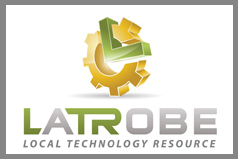
Student Project Manager: Spencer Loper
Other Student Team Members: Henry Ward, John Santine, Luke Rafie, and Cody Parrish
Industry Partner: LATROBE LLC
Industry Partner Contacts: Latanyua Robinson, President; and James Robinson, Vice-President
Founded in 2010, LATROBE LLC is a consulting firm operating transactional businesses to provide livable wage job opportunities in manufacturing and transportation. The Mission of LATROBE LLC is to advocate for Economic Empowerment thru Education + work Experience + Entrepreneurship. Since 2019, LATROBE has entered a Delivery Service Partnership (DSP) with Amazon, acting as a subcontractor for final mile delivery. In completing their delivery routes, LATROBE receives data from multiple, independent applications that Amazon provides. Currently, no process or mechanism exists for LATROBE to synthesize and leverage their data in making business decisions. The goal of our project is to design a system to turn LATROBE’s multiple data sources into meaningful analytics and visualizations. To accomplish this goal, we designed a system composed of three subsystems: extract, transform, and load (ETL), data storage, and data visualization. In designing this system, we provided LATROBE with two solutions: our original proof-of-concept tool that could be implemented immediately, and our proposed future work to add more capabilities and automation if LATROBE wants to invest more in this area.
Improving the Usability and Accuracy of a Category Sales Forecasting Tool
Presentation Time/Location: 10:45 AM / Room 514
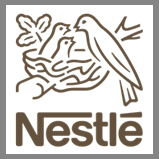
Student Project Manager: Chloe Kordsmeier
Other Student Team Members: Grant Glover, Collin Snieski, Caleb Gonzales, and Carolina Virreira
Industry Partner: Nestlé
Industry Partner Contacts: Edosa Aibangbee, Customer Account Manager; Raegon Barnes, Director Category Management; Ian Rippl, Customer Account Analyst; and James Gairhan, Category Sales Analyst
Nestlé is the world’s largest food and beverage company, and Nestlé USA is a branch of the company that provides a variety of products to retailers across the United States. Nestlé USA’s office in Rogers, Arkansas, is focused on Nestle’s relationship with Walmart. Nestlé USA has three category advisorships with Walmart: Baking, Chilled Creamers, and Frozen Meals; Walmart trusts Nestlé to offer advice on product placement and quantity in those categories. Our project is focused on improving the forecasting tool created by a 2020-2021 University of Arkansas industrial engineering capstone team. Currently, Nestlé USA uses the previous year’s sales data as the prediction for the current year’s sales instead of using the tool created by the 2020-2021 team. Nestlé USA asked us to improve the user interface of the tool and to extend the forecast horizon while maintaining a low mean absolute percent error. To improve the forecasting horizon of the previous tool, we weighted the 2020 sales data to adjust for the impact of the COVID-19 pandemic. To address the tool’s user-friendliness, we altered the R code to allow the user to choose their file and automatically count the number of weeks for historical data, eliminating the need for the user to have to alter the code.
Balancing Hospitalist Workload by Optimizing Patient Assignment using Linear Programming
Presentation Time/Location: 2:15 PM / Room 513

Student Project Manager: Brandon Jerome
Other Student Team Members: Jaiden Ellerbee, Ryan Kraichely, Terrance Martin, and Camille Sockwell
Industry Partner: Parkland Health
Industry Partner Contacts: Nina Drolc, Executive Nursing Leadership, Senior Analyst, Database; and Nainesh Shah, M.D., Deputy Medical Information Officer
As one of the largest public hospital systems in the United States, Parkland Hospital serves Dallas County, Texas. Patients with medical diagnosis are admitted and assigned to a hospitalist, a physician trained in hospital medicine tasked with day-to-day care of medicine inpatients. Parkland Hospital is concerned with the amount of time hospitalists spend each morning assigning patients to hospitalist teams, and the resulting workload imbalance among hospitalists. To automate the assignment process, we created a decision support tool that utilizes Microsoft Excel and Visual Basic for Applications to read in patient data, clean and format the data, calculate severity scores per patient, and output a file that is then read in by a Python script. The script runs an integer program built to optimize patient assignments. Our model outputs proposed patient assignments with the objective of balancing workload among hospitalists while also considering the unit location preferences of hospitalists. In addition to optimizing workload balance, our tool will reduce the time required to assign patients to hospitalists by 75-85%.
Reducing Bone, Liver, and Lung Biopsy Turnaround Times for Potential Oncology Patients by Standardizing System Processes
Presentation Time/Location: 3:15 PM / Room 513

Student Project Manager: Shantal Sarmiento
Other Student Team Members: Tayden Barretto, Stephen Branscum, and Paola H. Franco
Industry Partner: Parkland Health
Industry Partner Contacts: Nina Drolc, Executive Nursing Leadership, Senior Analyst, Database; Jenni Burnes, Vice President, Ancillary Services; and Robyn Cobb, Program Manager
Parkland Health is one of the largest public hospitals in the U.S. Opened in 1894, Parkland is a safety net provider that serves uninsured, underinsured, and lower-income patients. Parkland offers multiple services within the hospital, but we are specifically interested in the interaction of medical imaging (radiology) and cancer care (oncology). Our goal is to reduce biopsy turnaround times of potential oncology patients to less than 14 days from biopsy order to biopsy appointment completed. We conducted analysis on different data sets provided by Parkland to determine the system's steps and how long it takes a patient to move between each major stage in the process. We identified problems related to data recording, lack of standardized processes, and appointments scheduled without patients' awareness. We wrote VBA code to reorganize the data for easier analysis, and we performed a linear regression to show the relationship between time to complete the process and day, month, and year. In addition, we developed a simulation model to support our recommendations for system standardization, to reduce turnaround times, and to improve the overall patient experience.
Improving the Centralized Lending Processes for Increased Throughput using Targeted Human-Centered Solutions
Presentation Time/Location: 1:15 PM / Room 513
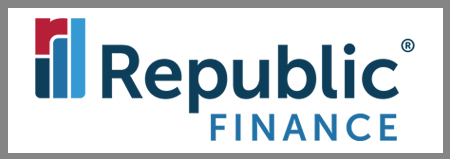
Student Project Manager: Luke Weiner
Other Student Team Members: Cleondra Cooks, Anna Lee, Jaira Porter, and Aidan Grygar
Industry Partner: Republic Finance, LLC
Industry Partner Contacts: Sherwin Poormand, Head of Loss Mitigation Strategy; and Savensky Drakeford, Head of Central Collections
Founded in 1952, Republic Finance specializes in providing a variety of consumer loans, flexible lending options, and incomparable customer service. They have assisted customers in meeting their personal finance goals for nearly 70 years. With branch offices located in Alabama, Georgia, Kentucky, Louisiana, Mississippi, Missouri, South Carolina, Tennessee, Texas, and Virginia, Republic Finance is proud to serve more than 300,000 customers in over 250 communities throughout the United States. Republic Finance provides flexible lending options to customers through both localized branches and a Central Lending Unit (CLU). While branches work directly with customers located within a specified geographical footprint, the CLU operates over-the-phone across the entire Republic Finance customer base, including those customers who are not located near a branch. We worked with the CLU to identify and provide solutions for several problem areas within their remote lending process. Several opportunities were identified within the steps of the process including initial solicitation, agent-to-customer interaction, receiving customer documents, and contract execution. Focusing on mutually exclusive and collectively exhaustive solutions to address all parts of the loan-by-phone process, our team generated five solutions with different targeted improvements. To improve initial solicitation and contract execution, a modified agent script and online appointment booking system were designed. A digital collateral list and document checklist were created to enhance the agent-to-customer interaction model. Lastly, using random forest modeling, primary factors with the highest correlation to a customer filling an application after solicitation were identified and we recommended a possible path forward to prioritize customers with a higher probability of applying for a loan.
Improving the Sustainability and Reducing Costs of Inbound Loads using Lane Consolidation
Presentation Time/Location: 1:15 PM / Room 512

Student Project Manager: Emma Regier
Other Student Team Members: Lucas Hicks, Emily Eskens, Jacob Reich, and Austin Wood
Industry Partner: Sam's Club
Industry Partner Contacts: Abhishek Devadiga, Manager II, Supply Chain Management; and Ben Grunow, Sr. Manager Outbound Transportation
Sam’s Club is a retail warehouse club managed in conjunction with Walmart that operates out of large facilities and charges their club members annual fees to shop at their stores. Sam’s Club’s distinctive business model allows customers to buy items in bulk. Our system of interest is their inbound transportation network that is responsible for transporting products from vendors or import distribution centers to center points, Sam’s distribution centers, or fulfillment centers. Our initial goal was to investigate the use of heavy haul permits to reduce empty miles, but we found that divisible loads cannot legally be considered for heavy haul. We then pivoted our focus to a load consolidation effort. Sam’s Club asked us to design and develop a decision-support tool to evaluate the cost savings and sustainability impacts associated with load consolidation opportunities. To accomplish this, we created a tool through Power BI that identifies lanes that are underutilized and provides potential savings and sustainability improvements if consolidation efforts were to be implemented. Once connected to Sam’s Club’s live data source, this tool will be able to track and identify consolidation opportunities within lanes for the inbound transportation network.